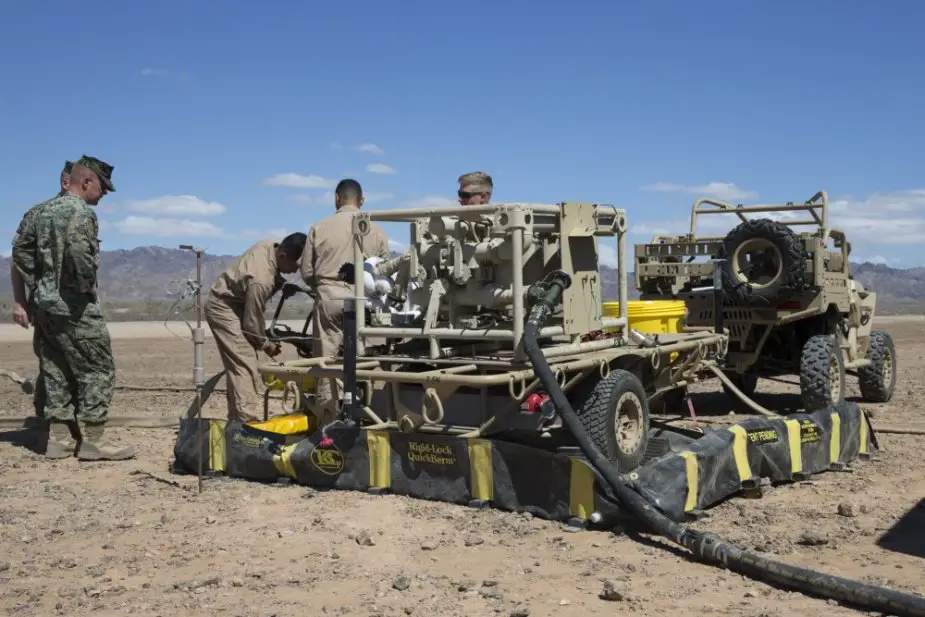Breaking news
USMC tactical aviation ground refuelling system.
“The Marine Corps has the capability to set up Forward Arming and Refueling Points. The Tactical Aviation Ground Refueling System is the improved method of fueling, allowing more mobility and speed by having already assembled basic equipment on the trailer,” said Lee Duncan, a fuel analyst with Marine Corps Systems Command.

USMC bulk fuel specialists, with Marine Wing Support Squadron (MWSS) 371, Marine Aircraft Group 13, 3rd Marine Aircraft Wing, set up a tactical aviation ground refueling system in support of a forward arming and refueling point exercise during Weapons and Tactics Instructor (WTI) course 1-19 at Landing Zone Bull Attack, Chocolate Mountain Aerial Gunnery Range, California, Oct. 3, 2018. WTI is a seven-week training event hosted by Marine Aviation Weapons and Tactics Squadron One (MAWTS-1) which emphasizes operational integration of the six functions of Marine Corps aviation in support of a Marine air-ground task force. WTI provides standardized advanced tactical training and certification of unit instructor qualifications to support Marine aviation training and readiness, and assists in developing and employing aviation weapons and tactics.(Picture source: U.S. Marine Corps / by Lance Cpl. Andrew Huff)
US Marine wing support squadrons have a responsibility to provide FARP teams to the Marine Air-Ground Task Force. The TAGRS is a versatile, mobile, and rapid ground refueling system that is MV-22 and CH-53 transportable. It is intended to improve the operational speed and mobility of ground fuel systems to rapidly establish mobile refueling sites in remote and austere locations. “Our main effort has been improving the Marine Corps’ and Navy’s ability to do bulk fuel distribution in predictable and unpredictable environments,” said U.S. Marine Corps Maj. Kelvin Chew, the technology and experimentation analyst for the Expeditionary Energy office. “The TAGRS is one of those capabilities that allows us to move fuel around the battlespace, whether it’s from the ship to shore or from the shore to distributive points.”
Testing of the system began in mid-2017 when the idea was first introduced with Marine Wing Support Squadron 172. The goal was to increase mobility and decrease overall fueling times. WTI 1-19 is one of the first places to experiment with the TAGRS, with the hopes of measuring the improvement in employment and refueling time of the TAGRS versus older methods. “What we’re doing is designing and building prototypes that demonstrate this concept to show the Marine Corps that this works,” said Chew. “Based on the results from our testing, we can inform the requirements which would allow us to eventually build these and field these to the units out in the fleet.”


























